Iran is Israel's main adversary – helping Hamas, backing Hizballah and building nukes. It's time for Israel to hit back – and here's how.
Iran is Israel's main adversary in the Middle East – supporting Hamas and Islamic Jihad, backing Hizballah and trying to build nuclear weapons • But Iran is not as strong as it seems, and it has problems with many disaffected and large minorities • Iran has been meddling in our backyard for long enough, it's time to hit back • Nicholas Saidel explains how we can do it

As Operation Protective Edge confirmed, Israel faces an increasingly dangerous enemy in Hamas. Hamas' power, to a large extent, relies on its relationship with Iran – historically, Hamas' main benefactor. Israel should counterattack and engage in a robust diplomatic campaign to expose the plight of persecuted minority groups inside Iran, complemented by a more clandestine strategy of arming and funding Iranian minority groups with valid claims in order to undermine the Iranian regime. Cooperation in this regard will enable Israel to strike Hamas' patron state on its own soil, destabilizing Iran and weakening the terrorist supply chain that begins in Tehran and ends in Gaza.
Such a strategy would destabilize Iran, bleed it of valuable resources and manpower, and with a bit of luck, eventually disintegrate the Persian state into several weak states that pose no credible threat to Israel. At the very least, Israel's pursuit of such a strategy could serve to strengthen the West's hand in the extended negotiations with Iran over its nuclear program, adding much needed pressure as the West loosens sanctions in accordance with the interim deal with Iran.
At a time when Middle Eastern borders are becoming blurred if not erased entirely, and increasingly restive separatist movements are increasingly gaining traction without any serious intervention by the international community, Israel must act to exploit this situation. The sanctions regime imposed by the West on Iran has made impoverished minorities within the state even more agitated than before. Israel must capitalize on the present conditions that favor revanchist and irredentist claims – and sooner rather than later – in order to destroy or at the very least severely weaken, the Iranian regime.
There are at least four minorities within Iran that have organized liberation movements capable of bringing this vision to fruition: (1) The Iranian Kurds; (2) the Iranian Azeris; (3) the Ahwazi Arabs; and (4) the Iranian Balochs.
Iranian Kurds
Kurds are a great potential ally for Israel. They are, for the most part, a moderate, secularly-minded minority nation in the Middle East with historic ties to the Jewish State and the Jewish people. They are primarily Sunni yet interestingly believe that they are descended from Abraham. Israel was the first country to support Kurdish independence in Iraq and has a long history of giving the Kurds military assistance and training in that country.
The Kurds of Iran number about 12 million, most of whom live in the Kurdistan Province in Northwest Iran. They are oppressed in Iran more than anywhere else in the Middle East. The Kurdish province inside Iran is terribly poor, and many Kurds face torture, extended prison terms, and execution without due process from the Iranian regime. Private discrimination is also rampant. Two prominent Kurdish political figures were hanged in 2013. Iranian President Hassan Rouhani campaigned on reforms, but according to Iranian Kurdish sources, nothing has changed. Hardliners within Iran cracked down on the Iranian Kurdish community after Rouhani's election.

The Free Life Party of Kurdistan (PEJAK) is currently fighting Iranian forces and inflicting casualties along the Iran-Iraq border. Just last October, PEJAK killed five members of the prestigious Iranian Revolutionary Guards Corps (IRGC), the division of the Iranian Armed Forces specializing in countering internal and border threats to the regime. PEJAK could possibly be enticed into an alliance with Israel given that Israel has proven experience in training Kurdish forces that have created a de-facto state inside Iraq.
Israel trained and equipped the Kurdish "peshmerga" forces in Iraq, an army that has proven itself to be highly capable, as it seized Kirkuk earlier this year, and which has become the army of choice for the supply of United States armaments aimed at defending against the onslaught of IS (the Islamic State). PEJAK is most certainly aware of Israeli assistance to their brethren in Iraq. With the help of Israeli military expertise and a healthy supply of Israeli weaponry and other types of aid, PEJAK's strength as a fighting force would be dramatically increased.
An Israeli-PEJAK alliance would wreak havoc on the IRGC. In exchange for Israeli aid (and perhaps aid from other Axis enemies such as Egypt, Saudi Arabia, and the United Arab Emirates), PEJAK would in turn assist Israel in espionage and sabotage efforts from within Iran, and providing intelligence related to Iran's nuclear program. In addition, PEJAK could host and hide Israeli operatives on Iranian soil, who could use the territory as a forwarding operating base.
Aside from PEJAK, there are no large-scale Kurdish movements dedicated to an armed struggle at this time against the Iranian regime. One group, Komala, has decided to engage in a civil struggle, but it has left the door open to armed rebellion in the future.
Iranian Azeris
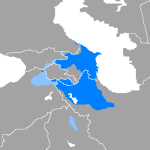
Iran's Azeri population is the largest of all minorities at approximately 22 million people, around 25% of the entire Iranian population. They are a Shi'a, Turkic-speaking nation who live primarily in several provinces in Northwest Iran. This minority suffers from linguistic, cultural, and ethnic discrimination, and its region’s natural resources are essentially looted by the central government. There is rampant unemployment and poverty in the Azeri regions, and there has been an effort by the government to “Persianize” the Azeri provinces. Admittedly, a large number of Azeris have overcome discrimination to become elite members of Iranian society. Grand Ayatollah Khamanei says he is an ethnic Azeri, though few believe this claim.
The government in Tehran arbitrarily arrests and tortures Azeri political prisoners calling for Azeri independence and clamps down hard on Azeri student demonstrations at the University of Tabriz. The South Azerbaijan National Liberation Front (GAMAC) states that Azeris don’t have access to the Iranian political system or educational system in their mother tongue. In late 2013, 5 Azeri political prisoners went on a hunger strike after Rouhani failed to implement his campaign promises. Iran has undertaken efforts, quite successfully, to create friction between Azeris and Kurds, as each are battling to create new provinces in Iran and bills of rights that protect their own minority interests. Having said that, in the spring of 2009 explosions at a police barracks in Western Azerbaijan province were said to be carried out by Azeri and Kurdish separatists purportedly working together.
Groups like GAMAC and the Azerbaijan Liberation Front (ANRO) seem more committed to a non-violent struggle at the present time, though an armed rebellion could occur given ample external support and a rise in the current trend towards nationalist separatism – a trend that Iran now sees as a threat to its national security. Even if armed struggle is not the current course for Iranian Azeri groups, Azeris have their own country to the north of Iran that is already aiding Israel in pursuing an agenda of Iranian destabilization. Such an effort on the part of Azerbaijan is based not just on the unresolved Iranian Azeri issue – which it has historically tried to stay away from – but also because of other bilateral points of contention with Iran.

Fortunately, Israel maintains good, if not excellent relations with Azerbaijan, a moderate and largely secular country loosely based on the Turkish model that declared independence following the fall of the Soviet Union in 1991. Israel currently assists Azerbaijan militarily, bulking up its arsenal with increasingly modern weaponry and coordinating closely with Azeri advisors on how to increase their operational effectiveness. In 2012, Israel and Azerbaijan signed a weapons deal worth $1.6 billion.
The military relationship between Israel and Azerbaijan has enraged the Iranian leadership, who upon learning of the 2012 deal planned a terrorist attack in Baku targeting Jewish and Israeli interests – an attack that may have been foiled by Israel’s Mossad. The mullahs are worried Israel may use Azerbaijan as a base from which to conduct reconnaissance operations and/or attack Iranian nuclear installations even though Azerbaijan officially rejects this claim. Azerbaijan regularly deals with Iranian agitators who believe Azerbaijan should be annexed by Iran. The Aliyev government suspects Iran’s hand in this campaign and in the spreading of “Iranianism” in Azeri mosques.
Azerbaijan would like to challenge Iranian hegemony in the Caspian Sea to protect its energy interests offshore. Israel can help in this regard, as it now has experience in defending its natural gas reserves found in the Leviathan and Tamar fields off the coast of Haifa. It can also provide help to Azerbaijan with respect to its ongoing conflict with Armenia over the disputed territory of Nagorno-Karabakh. Such efforts would amplify Israel’s already significant level of influence in Baku – influence that could be leveraged to foment armed Azeri struggles within Iran’s borders.
Another option for Israel is to attempt to revive U.S. support for the Azeri independence movement, support that flat-lined in the early 2000s before many Iranian Azeris became nationally self-aware. There are already signs of such a revival without the help of an Israeli diplomatic initiative. In 2012, Congressman Dana Rohrbacher (R-CA) introduced a resolution in the House of Representatives calling for Azeri independence. Israel would be wise to explore U.S. help, be it covert or overt, in supporting Azeri independence now that there is more widespread support among Iranian Azeris to liberate their territory from Iranian rule.
Because there are so many Azeri Iranians, and because they have infiltrated the highest levels of Iranian society, their struggle, with the support of Israel, could eventually be the most powerful of all irredentist groups inside Iran. It could serve as a model for other Turkic minorities in Iran as well, awakening their sense of nationalism and collective self-determination. That the Iranian Azeri independence movement has yet to become an identifiable armed struggle, and that it is still in its infancy stage, should not deter Israel from reaching out to groups willing to take up arms against Iranian regime forces.
Ahwazi Arabs of Khuzestan
Iran is home to almost 2 million Arabs, many of whom live in the Khuzestan province in West Iran. Khuzestan is known by some Arab separatists as Arabistan or al-Ahwaz, though technically al-Ahwaz is the capital of the Khuzestan province. “Ahwazi Arabs,” who are by-and-large a Shi’a population comprised of many refugees from the Iran-Iraq War, face racial and linguistic discrimination in Iran. Other grievances include violence against Arab demonstrators by security forces, land confiscation, poverty, the “Persianization” of their land, and exclusion from the political realm.
Unlike Azeri Iranians, there is a long history of separatist movements in al-Ahwaz based on a strong Arab identity. Notably, Ahwazi Arab armed groups have coordinated attacks with Kurdish and Baloch groups. It is also worth mentioning that many Iraqi Sunni Arabs want to “save” their brothers in al-Ahwaz, and that Ahwazi groups are purportedly helping rebel groups inside Syria.
Al-Ahwaz is home to almost 90% of Iran’s natural resources and sits in a strategic position bordering Iraq and the Persian Gulf. Vast oil reserves make stability in this region a priority for the Iranian regime. However, stability has not consistently been the case. Tehran already blames Israel for the unrest in this region, but Saudi Arabia and other Gulf States would also like to see Ahwaz as an independent state and as a 7th member of the Gulf Cooperation Council (GCC). As Israel and Saudi have a forged a tacit alliance against Tehran, cooperation in al-Ahwaz seems natural.

Wide-scale unrest and a series of terrorist-style bombings occurred in 2005, resulting in scores of Iranian civilian deaths. Iran’s subsequent crackdown led to led to as many as 50 casualties, and was followed by wide-scale arrests and executions. The 2005 riots were duplicated in 2011 on its 6th anniversary, and twelve more Ahwazi Arabs were killed by Iranian forces. Armed Ahwazi Arab organizations have disrupted the flow of energy in Khuzestan as recently as 2013 when the Mohiuddin Al Nasser Martyrs Brigade used an IED to blow up a pipeline in Iran ostensibly because of Iran’s Syrian policy. Also, the Arab Movement for the Liberation of Ahwaz hit a petro-chemical plant in al-Ahwaz in August 2013.
Many Ahwazi groups do not want to see Iran go nuclear and at least one group, the al-Ahwaz Arab Popular Democratic Front, has gone on record to state that it would use arms if need be to prevent such a scenario. Such an interest is aligned with Israel’s, and thus Israel should exploit the potential for an organic alliance with groups such as these. Others include: (1) the Islamic Reconciliation Party, (2) the Ahwaz Arab Renaissance Party, and (3) the Ahwaz Liberation Organization – an offshoot of a movement sponsored by former Iraqi President Saddam Hussein.
Out of the main four main minorities in Iran, the Arabs of al-Ahwaz present Israel and its Gulf supporters with the most immediate impact in terms of destabilizing a strategically invaluable region within Iran. The Ahwazi Arabs have longstanding aspirations for independence and have proven their willingness to fight to obtain their national rights. Nonetheless, there are groups whose methods are rooted in terrorism. Israel should vet any groups with whom it makes contact to ensure it is not aiding in the killing of innocent Iranian civilians. Once alliances with legitimate resistance groups are formed, Iran will be forced to divert much of its military resources, especially intelligence/counter-intelligence resources, financial resources and manpower, to fend off Israeli-Gulf backed movements whose goal is the secession of al-Ahwaz from Iran.
Iranian Balochs
Iranian Balochs hail from Eastern Iran, primarily within the Sistan-Balochistan Province (“Sistan” was added so as to Persianize the name), with a population around 1.5 million. The Balochs of Iran are Sunni and speak their own language. The community is brutally subjugated in Iran. Iranian Balochs, like minorities previously mentioned herein – with the aforementioned exception of some Azeris who, as stated, have reached the highest levels of Iranian society – are a very poor community within Iran, and disagree with the central government’s policies in Syria. Their political leaders languish in Iranian jails without due process and are usually eventually hanged. Some reports suggest 60% of crane hanging victims inside Iran are ethnic Balochs.

The Baloch movement for independence is not new and is an aspiration ingrained by a large segment of the Iranian Baloch populace. The leader-in-exile, Kalat Mir Suleman Daud Ahmadzai, supports Israel outright and has gained backing from within the American Tea Party and from some Gulf states. Significantly, this group has expressed their sympathy for the plight of the Ahwazi Arabs, so there could be potential for collaboration between these two minorities given the presence of Israeli leadership, arms, and training.
There are several Iranian Baloch groups already engaged with the Iranian military. In late 2013, Jaish al-Adl, an offshoot of Jundallah (explained in more detail below) killed 14 Iranian border guards along the Sistan-Balochistan/Pakistan border. As recently as April 2014, Jaish al-Adl kidnapped 4 Iranian border guards and brought them into Pakistan, which strained Iran-Pakistan relations.

The Mujahedin-e-Khalq (MEK), a leftist Baloch organization now based in France, is credited with revealing Iran’s nuclear program in 2003, alerting Americans to Iranian advancements in nuclear technology. U.S. officials confirmed that MEK was financed, trained, and armed by Israel to kill Iranian nuclear scientists. This group had been given refuge inside Iraq during the Iran-Iraq War, and mounted attacks on Iran from within Iraqi territory. MEK is no longer considered a terrorist organization by the U.S. after a prolonged lobbying campaign on Capitol Hill.
Jundallah is a terrorist group that needs mentioning as it also has a history of working with Israel and with the Mossad in particular – though possibly under false pretenses. It was reported that in 2012 Mossad agents posing as CIA officers approached Jundallah to coordinate attacks and assassinations of prominent Iranian officials. This caused a diplomatic uproar between Washington and Jerusalem.
One possible way for Israel to sow strife in the Baloch region would be to disrupt the proposed Iran-Pakistan natural gas pipeline that will run through Iranian Sistan-Balochistan Province. This pipeline, which will provide Pakistan with Iranian energy, is worth billions to Iran. The local Balochs had no say in this project and will likely see no proceeds or employment related to its construction, so there could be opportunities for Israel to hit the pipeline with local assistance. The Iran-Pakistan pipeline arguably violates the sanctions regime against Iran. Therefore, an attack on it has legal justification. Also, the U.S. may not be overly upset if Balochs disrupt this deal, as America prefers the Turkmenistan-Afghanistan-Pakistan-India (TAPI) pipeline that would completely circumvent Iran.
Israel is, in some ways, implementing the strategy advised in the present document by forming alliances with Baloch separatist movements inside Iran. While it has perhaps negligently dealt with some unsavory characters and groups in the Baloch movement, it is clear that Israel’s engagement with the Balochs has created instability and discord inside Iran, and has wreaked havoc upon Iran’s nuclear program. Israel should modify its Baloch policy to ensure it is solely working with legitimate resistance movements who operate within the laws and norms of war, yet also expand the policy to include other minority populations under the same umbrella of resistance so as to maximize the potential for Iran’s weakening from within.
Conclusion
Iran is not as united or as naturally integrated as some Westerners presume. While Persia has ancient roots, modern Iran is an artificial state in that it is not comprised of mainly one nation. It is rather an amalgam of many ethnic groups, most of which suffer from harsh repression from the central government and which have responded to such aggression by resisting through armed struggle. Supplying weapons, training, and other types of military and humanitarian aid to these minorities will pave the way for Israel to have multiple military and intelligence footprints within Iran’s borders, and increase its ability to disrupt the machinations of the mullahs until the theocratic regime is severely weakened or toppled.
Nicholas Saidel is Associate Director at the Institute of Strategic Threat Analysis and Response (ISTAR) at the University of Pennsylvania. He has contributed to Fox News, the Daily Beast and the Huffington Post.
To receive updates on new articles in English, join Mida on Facebook or Twitter or join our mailing list.

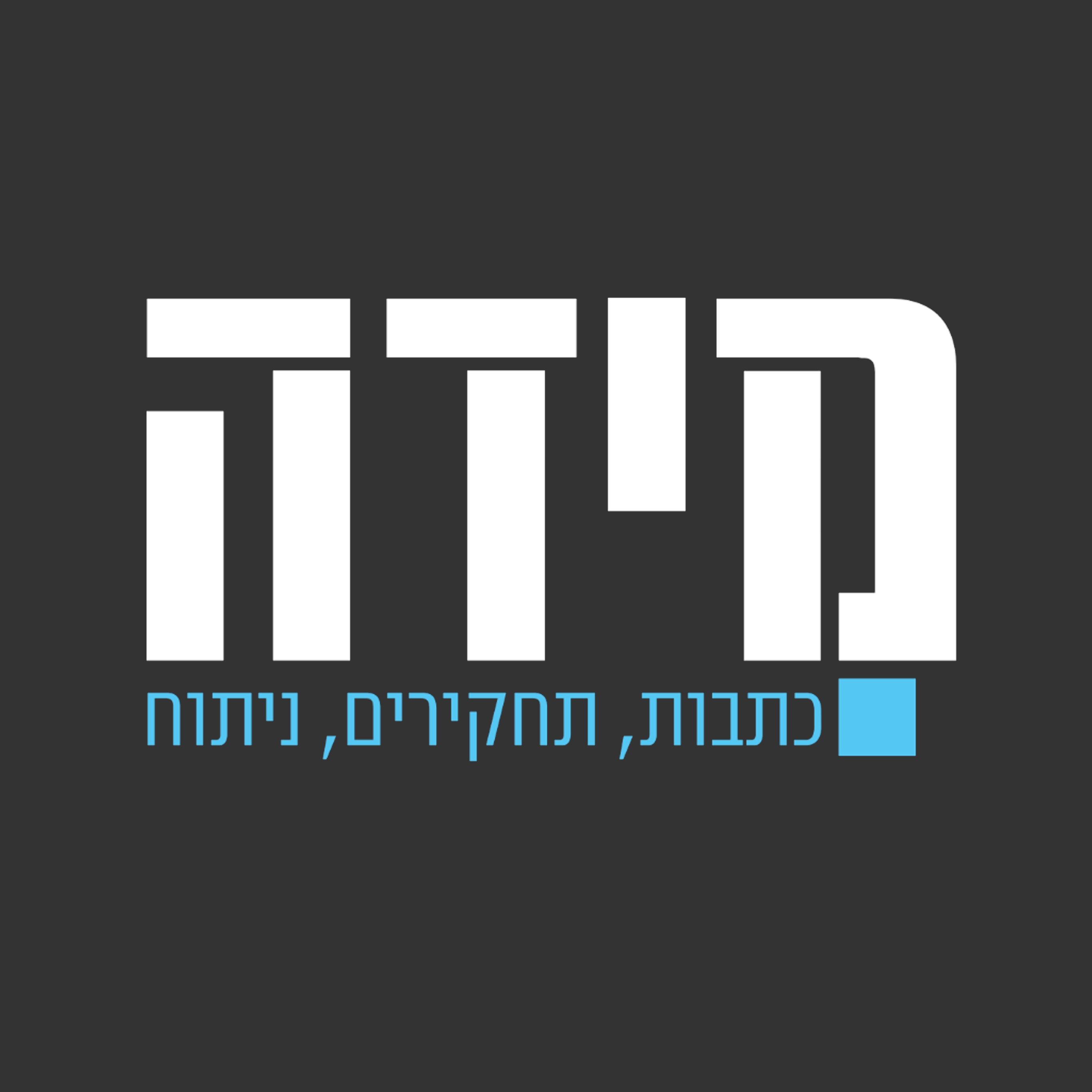
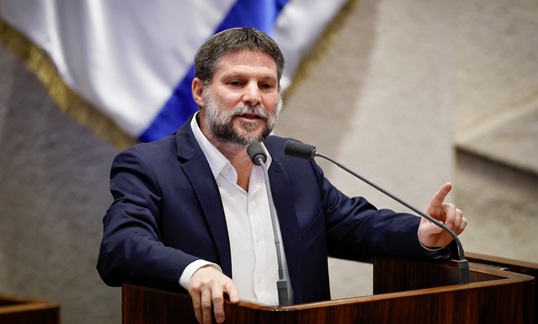
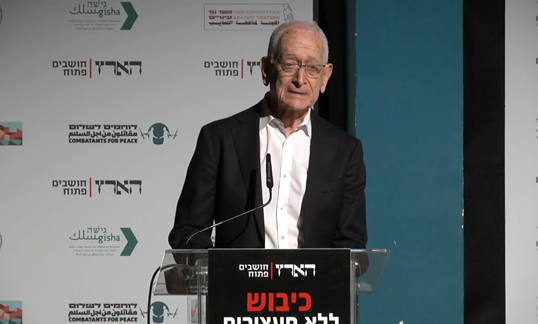
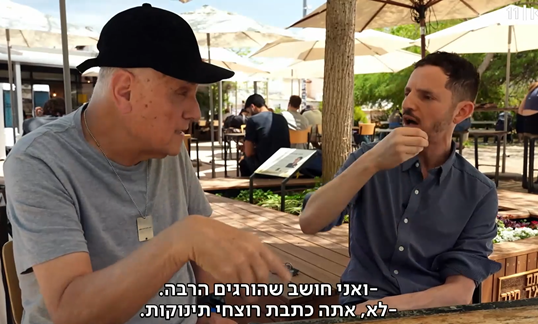

MEK a Balouch organization?! really!! at least do your homework and post correct info.
you claim that Iran has 12 million Kurds!!! 25 percent Azeris(19 million) ,2 million Arabs and 1.5 million balouchs so thats 34.5 million!!!! do you really believe that
As your own maps shows Kurds are in Kordestan, west Azerbaijan, Kermanshah, ilam and parts of khorasan provinces
Khorasani Kurds are shias and many of them speak persian,
Kordestan province has a 1.4 million pop, Kermanshah 1.8, Ilam 0,5 million(half of ilam are Lurs) and W.azerbaijan(which is mostly Azer) has 3 million pop so even of we consider half of W.azerbaijan Kurds we will get 4,9 million which is much closer to 7 to 10 percent estimated of western sources, you should also know that Kermanshahi and ilami kurds are shia and many Kermanshahi kurds have been persianized
Regarding azeris you claim tha Ayatollah Khamenei claims that he is Azeri and very few believes him?! you know that Khamnei can speak Azeri and his father was an Azeri and also his name means that he is from city of Khameneh which is in East Azerbaijan
http://en.wikipedia.org/wiki/Khamaneh
There are many azeris in Iran although it is not 25 percent but you should know that azeris are very well integrated(for example former commander of IRGC) was Azeri and many Tehrani Azeris(like most of my own family) are persianized , azeris are very patriotic and they are shia.
Arabs are around 1.5 million and they are mostly shia but khuzestan province has a 4.5 million population which means only on third are Arabs